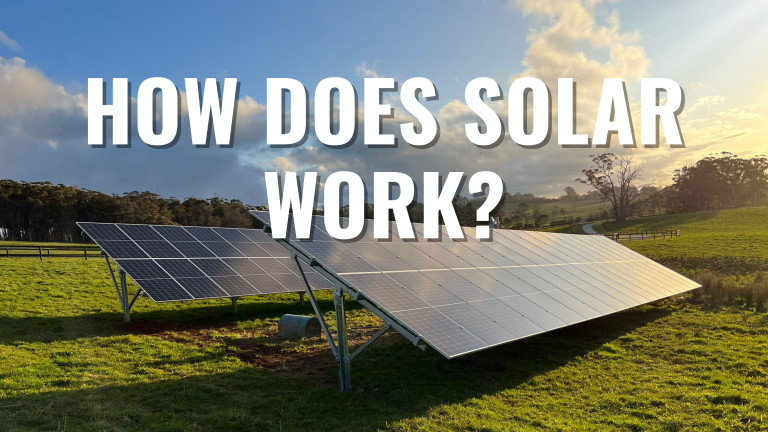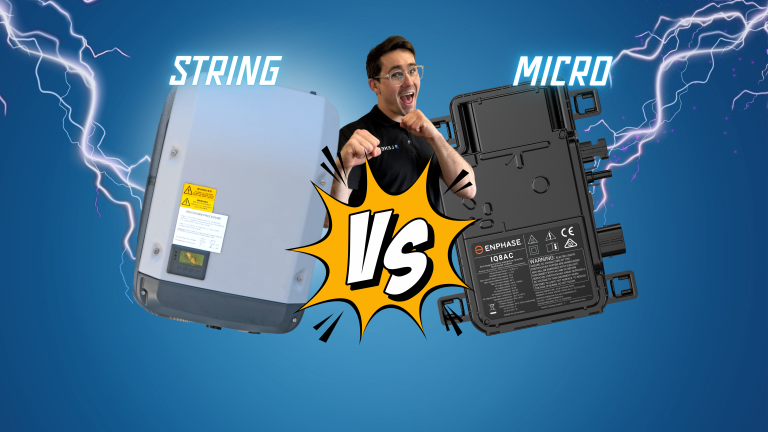What is the solar rebate and how does it work?
You’ve just started looking into a solar system for your home and have heard about a government ‘rebate’.
How much do you get from the rebate? How is it calculated? And am I eligible?

We will break down the ‘rebate’ and answer all these questions so by the end of this article you will know exactly where you stand with the government’s Small-scale Technology Certificates (STCs), commonly referred to as the “rebate”.
What is commonly referred to as the solar rebate isn’t technically a rebate. Instead, the incentive is distributed through Small-scale Technology Certificates (STCs) under the Australian Government’s Renewable Energy Target (RET) scheme. This initiative encourages the adoption of renewable energy sources by offsetting the initial cost of installing a solar system.
This incentive is determined by the number of STCs you can earn, which depends on factors such as your solar system’s size, your location or zone, and the year of installation.
The distribution of STC incentives is set to cease by the end of 2030, with a gradual decline in the number of STCs awarded per kilowatt installed each year leading up to that point. Installing your system sooner rather than later ensures you can maximise the benefits derived from STCs before their value diminishes further.

So, how are STCs calculated?
Your location:
As mentioned above one of the key components to calculating your STC amount is your location or zone. Your geographical zone determines how much solar radiation your panels receive, which influences the number of STCs you can earn. There are 4 zones within Australia and New South Wales falls into zone 3, which has been assigned a rating factor of 1.382 by the Clean Energy Regulator.

The size of your system:
One STC is issued per 1 megawatt hour of solar power produced per year up until the end of 2030, and 1 megawatt hour is equal to 1000 kilowatt hours.
The amount of power produced by your system per year really comes down to a few factors such as the size of the system, orientation and angle of the panels, shading, and the weather, to name a few. But for the sake of the calculation of STCs, the Clean Energy Regulator estimates an average annual production based on the size of the system and the zone in which it is installed, this is where the numerical value of 1.382 comes into play.
So if your system is an 8.12kW system it will be calculated by 8.12.
The larger your system, the more energy it can potentially generate, leading to more STCs. One STC is issued for every megawatt-hour of estimated electricity production over the system’s deeming period.
What date is your solar installation (Deeming Period):
The deeming period is a future projection of the system’s electricity production. The closer the date to the end of 2030 will decrease the amount of STCs you are issued. If your estimated installation date is the 15th of May 2024, your deeming period would be 7 years.
STC Value:
The current payment for an STC stands at $38.50 which is subject to fluctuations influenced by the solar market.
Now, let’s break down the above equation:
Your Zone x System Size x Deeming Period = STC
1.382 x 8.12kW x 7 years = 79 STC’s
79 STC’s x $38.50 = $3041.50
This amount represents a significant discount on the upfront cost of your solar system installation.

Why Act now?
With the STC program set to phase out by 2030, and the value of STCs decreasing each year, acting now is crucial. The longer you wait, the fewer STCs you’ll earn, which means less financial aid towards your installation costs.
Environmental Benefits
Adopting solar energy isn’t just beneficial for your wallet—it’s also good for the planet. Solar energy systems generate clean, renewable power from the sun and reduce greenhouse gas emissions, helping to combat climate change and reduce our reliance on fossil fuels.
How to Get Started
Assess Your Needs: Determine the size and type of solar system that would best suit your home. A solar installer should do this for you through their quoting process
Find a Reputable Installer: Look for certified and experienced solar installers that service your area.
Understand Your Eligibility for STCs: Your installer can help you calculate the number of STCs you’re likely to receive and factor this into the overall cost.
Apply for Incentives: Your solar installer will usually (should) handle the paperwork for STCs as part of their service.
Now that you’ve gained a better understanding of how the solar rebate works and its benefits, you are better positioned to make an informed decision about installing solar panels.
By leveraging the government’s Small-scale Technology Certificates (STCs), you can make significant savings on your solar installation. Don’t delay until the incentives decrease in value; seize this opportunity now to maximise your benefits and help preserve the environment.
Your next step is to decide if a Micro or String inverter is right for you: String VS Micro Inverters




